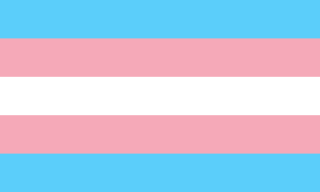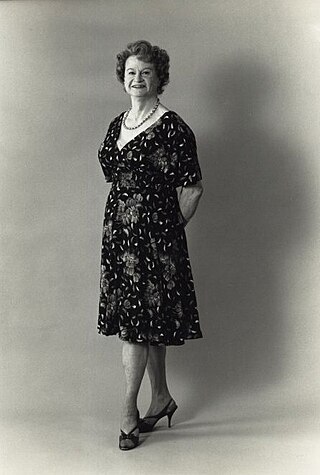
Cross-dressing is the act of wearing clothes traditionally or stereotypically associated with a different gender. From as early as pre-modern history, cross-dressing has been practiced in order to disguise, comfort, entertain, and express oneself.

A paraphilia is an experience of recurring or intense sexual arousal to atypical objects, places, situations, fantasies, behaviors, or individuals. It has also been defined as a sexual interest in anything other than a legally consenting human partner. Paraphilias are contrasted with normophilic ("normal") sexual interests, though the definition of what makes a sexual interest normal or atypical remains controversial.
Gender dysphoria (GD) is the distress a person experiences due to a mismatch between their gender identity—their personal sense of their own gender—and their sex assigned at birth. The term replaced the previous diagnostic label of gender identity disorder (GID) in 2013 with the release of the diagnostic manual DSM-5. The condition was renamed to remove the stigma associated with the term disorder.

Sexual fetishism or erotic fetishism is a sexual fixation on a nonliving object or body part. The object of interest is called the fetish; the person who has a fetish for that object is a fetishist. A sexual fetish may be regarded as a non-pathological aid to sexual excitement, or as a mental disorder if it causes significant psychosocial distress for the person or has detrimental effects on important areas of their life. Sexual arousal from a particular body part can be further classified as partialism.
Transvestic fetishism is a psychiatric diagnosis applied to men who are thought to have an excessive sexual or erotic interest in cross-dressing; this interest is often expressed in autoerotic behavior. It differs from cross-dressing for entertainment or other purposes that do not involve sexual arousal. Under the name transvestic disorder, it is categorized as a paraphilia in the DSM-5.
The following outline is provided as an overview of and topical guide to transgender topics.
Psychosexual disorder is a sexual problem that is psychological, rather than physiological in origin. "Psychosexual disorder" was a term used in Freudian psychology. The term of psychosexual disorder used by the TAF for homosexuality as a reason to ban the LGBT people from military service.

The Institut für Sexualwissenschaft was an early private sexology research institute in Germany from 1919 to 1933. The name is variously translated as Institute for Sexual Research, Institute of Sexology, Institute for Sexology, or Institute for the Science of Sexuality. The Institute was a non-profit foundation situated in Tiergarten, Berlin. It was the first sexology research center in the world.
The American-Canadian sexologist Ray Blanchard proposed a psychological typology of gender dysphoria, transsexualism, and fetishistic transvestism in a series of academic papers through the 1980s and 1990s. Building on the work of earlier researchers, including his colleague Kurt Freund, Blanchard categorized trans women into two groups: homosexual transsexuals who are attracted exclusively to men and are feminine in both behavior and appearance; and autogynephilic transsexuals who experience sexual arousal at the idea of having a female body. Blanchard and his supporters argue that the typology explains differences between the two groups in childhood gender nonconformity, sexual orientation, history of sexual fetishism, and age of transition.

Sexuality in transgender individuals encompasses all the issues of sexuality of other groups, including establishing a sexual identity, learning to deal with one's sexual needs, and finding a partner, but may be complicated by issues of gender dysphoria, side effects of surgery, physiological and emotional effects of hormone replacement therapy, psychological aspects of expressing sexuality after medical transition, or social aspects of expressing their gender.
The classification of transgender people people into distinct groups has been attempted since the mid-1960s. The most common modern classifications in use are the DSM-5 and ICD, which are mainly used for insurance and administration of gender-affirming care.
Mak Nyah, alternatively spelled maknyah, is a Malay vernacular term for trans women in Malaysia. It arose in the late 1980s in order to distinguish trans women from other minorities.

A transgender person is someone whose gender identity differs from that typically associated with the sex they were assigned at birth. Some transgender people who desire medical assistance to transition from one sex to another identify as transsexual. Transgender is also an umbrella term; in addition to including people whose gender identity is the opposite of their assigned sex, it may also include people who are non-binary or genderqueer. Other definitions of transgender also include people who belong to a third gender, or else conceptualize transgender people as a third gender. The term may also include cross-dressers or drag kings and drag queens in some contexts. The term transgender does not have a universally accepted definition, including among researchers.

A transsexual person is someone who experiences a gender identity that is inconsistent with their assigned sex, and desires to permanently transition to the sex or gender with which they identify, usually seeking medical assistance to help them align their body with their identified sex or gender.

Virginia Charles Prince, born Arnold Lowman, was an American transgender activist. She published Transvestia magazine, and started Full Personality Expression , which later became Tri-Ess, for male heterosexual cross-dressers.

The following outline offers an overview and guide to LGBT topics.

A transvestite pass was a doctor's note recognized by the governments of Imperial Germany and the Weimar Republic, under the support of sexologist Magnus Hirschfeld, identifying a person as a transvestite. Transvestite at this time referred to all individuals whose gender identity or preferred clothing was discordant to that associated with their assigned sex, and so included both cross-dressing and transgender people. As gender-confirming surgery was only an emerging practice in the early 20th century, obtaining a Transvestitenschein, along with an official name change, represented the maximum extent to which many trans individuals could transition.

Gerd Katter was a German apprentice carpenter, insurance agent and patient of the notable German physician and sexologist, Magnus Hirschfeld.

In Nazi Germany, transgender people were prosecuted, barred from public life, forcibly detransitioned, and imprisoned and killed in concentration camps. Though some factors, such as whether they were considered "Aryan", heterosexual with regard to their birth sex, or capable of useful work had the potential to mitigate their circumstances, transgender people were largely stripped of legal status by the Nazi state.

Paragraph 183 is a public indecency law of the German Criminal Code, which prohibits "sexual self-determination" and public exhibitionism. From its adoption in 1871, at an increasing rate during the rise of the Nazis, and until as late as the mid-20th century, the law was used to enforce penalties for cross-dressing and homosexual acts. As of 2021, the law's scope is limited to indecent exposure.












